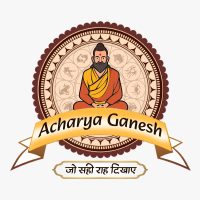Introduction:
Marriage is often considered one of the most significant and life-changing events in a person’s life. It marks the beginning of a lifelong journey with a partner, and in many cultures, it is seen as the union of not just two individuals but also their families. When it comes to choosing a life partner, compatibility is a crucial factor. In various parts of the world, particularly in India, astrology plays a significant role in assessing compatibility, and one aspect that is frequently considered is the matching of gunas, which are specific attributes or qualities associated with individuals’ personalities.
Understanding Gunas:
In Hindu astrology, gunas are fundamental qualities or attributes that are used to assess the compatibility between two individuals for the purpose of marriage. The concept of guna matching is based on ancient Vedic texts and is primarily used in the practice of Kundali or horoscope matching. The horoscope of each prospective bride and groom is analyzed, and the compatibility of their gunas is assessed to determine if they are a suitable match for marriage.
The Three Gunas:
There are three primary gunas that are evaluated in this process:
Satva (Goodness): Satva guna represents qualities such as virtue, purity, and spirituality. Individuals with a dominant satva guna are considered to have a balanced and harmonious nature.
Rajas (Passion): Rajas guna signifies qualities like ambition, desire, and passion. Those with a dominant rajas guna are often seen as active and ambitious individuals.
Tamas (Ignorance): Tamas guna represents qualities like laziness, ignorance, and lethargy. Individuals with a dominant tamas guna may be perceived as less motivated or driven.
Guna Matching:
In traditional Hindu astrology, the compatibility of gunas is assessed based on the total number of matching and non-matching gunas. The more gunas that match, the higher the compatibility is considered. Here’s a simple breakdown:
If 18 to 36 gunas match, it is believed to be an excellent match.
If 13 to 17 gunas match, it is considered a good match.
If 7 to 12 gunas match, it is considered an average match.
If 0 to 6 gunas match, it is believed to be a poor match.
It’s important to note that while guna matching is a significant factor in assessing compatibility, it is not the sole determinant of a successful marriage. Other factors, such as mutual respect, communication, shared values, and personal compatibility, also play a crucial role in the success of a marriage.
Conclusion:
The concept of guna matching in marriage is deeply rooted in ancient Hindu astrology and continues to be an important consideration for many individuals and families when seeking a life partner. While it provides a framework for assessing compatibility, it’s essential to remember that a successful and fulfilling marriage is built on a foundation of love, understanding, and mutual respect, which goes beyond the matching of gunas. Ultimately, the decision to marry should be based on a holistic understanding of both individuals and their compatibility on various levels.






Read 0 comments and reply